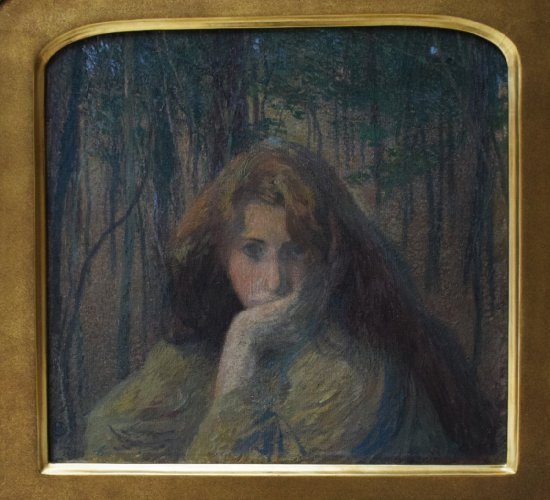Description:
Henri-Jean-Guillaume Martin (1860-1943) was a French painter. In 1879, after winning the Grand Prix École des Beaux-Arts in Toulouse, he moved to École des Beaux-Arts in Paris for his studies. Fascinated by Veronese and other Venetian painters, in 1885 he took a trip to Italy, which had an influence on his artistic journey. Upon returning, he exhibited at the French Salons for years. Taking inspiration from the art of Gustav Moreau, Puvis de Chavannes, Georges Seurat and Giovanni Segantini, he developed his own painting technique close to post-impressionism. He was associated with the Symbolist group of the Rose Cross for a while, exhibiting at their Salon. The author of numerous paintings in public buildings in Paris, Toulouse, Lyon and Marseille.
Description Purchase:
The painter depicts the portrait of a young girl on the canvas. She is shown frontally, in a bust shot. She is dressed in a loose blouse in shades of beige. It seems that she is resting her left elbow on the frame of the painting. In a gesture of contemplation, she is supporting her head in her hand. The model has her gaze directed forward, as if looking at the observer. Her dense brown hair falls over her shoulders and back. The background is a forest made up of thin tree trunks.
The artist uses his own technique based on the combination of divisionism and pointillism. He applies “pure” color spots that blend together from a distance. “Martin draws and dots, applies unbroken shiny paints in the form of spots, creates a kind of mosaic style, in order to give the oil painting the effect of a fresco. This has much in common with the style that Segatini used to convey the flickering of the clear Alpine air while maintaining the distinct silhouette of the figure.”* To emphasize the features of the figure, he uses light and shade expressed through bright – on the hair and navy – on the blouse, spots of intense colors. The work has a mysterious aura emphasized by the almost shaky composition.


